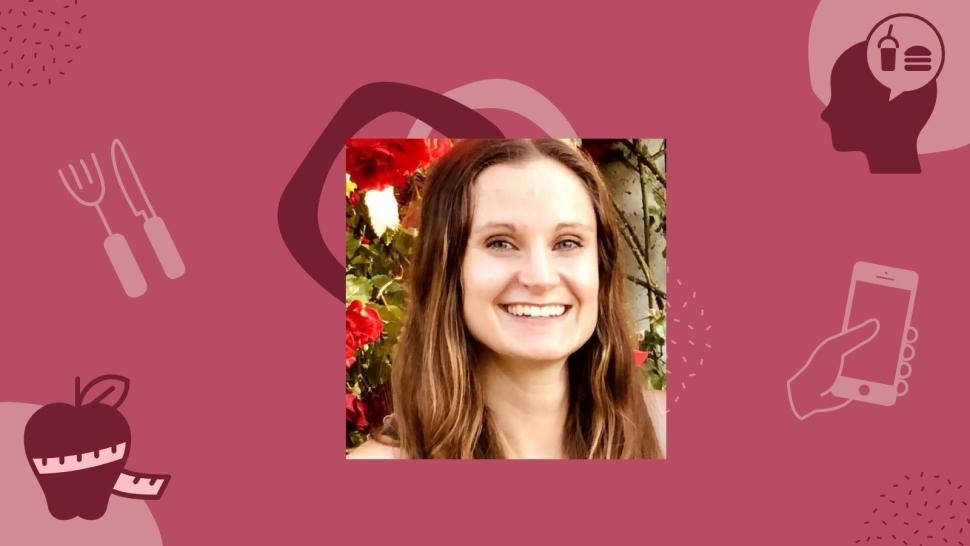Author: Alysha L. Deslippe, MSc, Doctoral Student, Human Nutrition, University of British Columbia | Editors: Negin Nia and Arrthy Thayaparan (Blog Coordinators)
Published: January 14th, 2022
Editor’s Note: This story discusses diet culture, eating disorders, and harmful food habits. If you or someone you know is struggling, call 1-866-NEDIC-20 or visit NEDIC.
No programs or policies exist in Canada that address how social media may impact the relationship between eating and body shape. A review in 2016 found that social media plays a large role in our relationship with food, and often not a positive one. As eating habits track forward, Canada’s food guide suggests supporting teens' development of healthy eating habits. Teen girls in particular may face unique pressures on eating through their social media use.
Body shape can influence teen girls’ food choices
Researchers like Dr.Vartanian suggest that we alter the type or amount of food we eat to manage other people's expectations. This includes historically pressures on women and girls to be thin. To address this, Dr. Vartanian suggests lower-calorie foods (e.g., salad instead of a double hamburger) or less foods (e.g., small fries versus large fries) are consumed. Teen girls as young as 13-15 years of age have also shown evidence of this. In an experiment where researchers watched what teens ate with a friend, girls ate less and chose healthier foods compared to boys. Another study in Canada found a link between eating less and body concerns using one-on-one interviews. Researchers individually interviewed a teen (13-14 years) and one of their parents. Forty-six percent of interviewed parents expressed concern that their daughters were decreasing how much they ate to control body shape. Parents in this sample did not express this concern for their sons. Instead, parents put pressure on their sons to eat more to gain size. As teen girls undergo physical changes in body fat distribution with puberty, they may be more vulnerable to historical pressure to be thin around this age.
Social media can harm the relationship between food and body shape in teen girls
When children enter their teens, their use of social media goes up. For example, in a study looking into app use, 96% (97/102) of 12–16 year-olds and 100% (63/63) of 17-18 year-olds used social media. Instagram and Snapchat platforms are often reported as the most used. In a study looking at social media use (including Instagram, Facebook, Snapchat and Tumblr) and eating in Australia, 68% of the 534 girls from grade 7 and 8 involved said they had an Instagram account. A further 59% reported having Snapchat. The girls self-reported what social media accounts they had and if they used any ‘disorder eating practices.’ Dietitians of Canada suggest that disordered eating practices can harm health and well-being. Some examples of these eating practices include binge eating, eating only in secret, skipping meals, restricting food intake or excessive exercise to make up for eating.
In the study above, looking at links between social media use and eating, the Australian researchers found that girls' use of social media platforms was related to harmful eating practices. For example, using Snapchat and ‘meal skipping’, ‘eating little food’, ‘following a strict meal plan’ or ‘strict exercise plan’. Using Instagram was linked to ‘skipping meals’ and having a ‘strict exercise plan’ as well. The other two social media platforms (Facebook and Tumblr) investigated were also related to girls' reports of ‘following a strict exercise plan’. The researchers suggest that this implies that both images of very thin or very fit folks, common on social media regardless of platform, can have a negative impact on teens eating. This matches work from other countries too.
We need more research to guide food programs and policies targeting social media use in Canada
Clear guidelines for Canadian food programs and policy are needed to address how social media can shape relationships between body shape and eating in teen girls. Some researchers have called for programs or policies focusing on media literacy. This approach focuses on helping teens identify unrealistic body shape standards. This may be an effective approach, but we need more research in the Canadian context first. Little work has explored how social media use impacts Canadian teen girls’ eating choices. Instead, a 2016 review revealed that most work looking at social media and eating comes from the United States or Europe. We also need to understand how teen girls' experiences with social media may differ from other gender groups. This includes boys, or teens who identify as transgender, gender fluid or bi-gendered. Programs and policy will need to account for these differences to ensure that all Canadian teens, regardless of gender, receive support to eat free from pressures of body shape.
